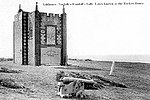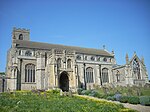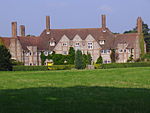Salthouse Marshes
Nature reserves in NorfolkNorfolk Wildlife Trust

Salthouse Marshes is a 66-hectare (160-acre) nature reserve west of Sheringham in Norfolk. It is managed by the Norfolk Wildlife Trust. It is part of the North Norfolk Coast Site of Special Scientific Interest, Geological Conservation Review site, Nature Conservation Review site, Grade I. Ramsar site, Special Areas of Conservation and Special Protection Area. It is also in the Norfolk Coast Area of Outstanding Natural Beauty.This site has grazing marsh and small pools. Birds include snow buntings, Lapland buntings, little egrets, shore larks and barn owls.There is access to the public
Excerpt from the Wikipedia article Salthouse Marshes (License: CC BY-SA 3.0, Authors, Images).Salthouse Marshes
Iron Road, North Norfolk Salthouse
Geographical coordinates (GPS) Address Nearby Places Show on map
Geographical coordinates (GPS)
| Latitude | Longitude |
|---|---|
| N 52.956 ° | E 1.082 ° |
Address
Iron Road
Iron Road
NR25 7XE North Norfolk, Salthouse
England, United Kingdom
Open on Google Maps










